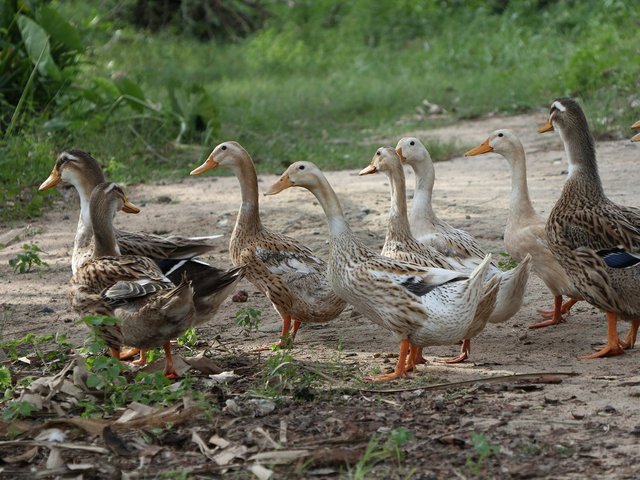
Claims that China is sending a locust-fighting army of 100,000 ducks to Pakistan, where the insects have been devastating local crops for the past year, aren’t what they’ve been quacked up to be, reports the Associated Press.
China Agricultural University professor Zhang Long, who is part of the country’s official delegation addressing the situation in Pakistan, told reporters on Thursday that no Chinese government program dedicated to using waterfowl to fight the pests exists, according to BBC News. He deemed the ducks’ deployment an “exploratory” method, adding, “Ducks rely on water, but in Pakistan’s desert areas, the temperature is very high.”
The rumors began with a Ningbo Evening News report quoting researcher Lu Lizhi of the Zhejiang Academy of Agricultural Sciences, who implied that the bug-munching birds could be used as “biological weapons.” A short video on China Global Television Network’s Twitter account seemed to back his claim. The story quickly triggered a social media storm, generating more than 500 million views on China’s Weibo platform in a matter of hours.
Whether a plan was ever in place to test Lu’s theory remains unclear. Per the AP, the Zhejiang Academy of Agricultural Sciences reported that it “was looking into the matter.” Lu seemed to imply to reporters at the Ningbo Evening News that he was planning to complete a trial in China’s western Xinjiang region in the coming months.
Theoretically, birds may be cheaper and more environmentally friendly than pesticides, but could they really save the day?
As Earther’s Yessinia Funes writes, such a scenario is highly unlikely. About 40 million to 80 million locusts can occupy just one square kilometer of a swarm stretching several hundred square kilometers, according to the United Nations’ Food and Agriculture Organization (FAO). Keith Cressman, a senior locust forecaster with the Food and Agriculture Organization (FAO) tells Earther that an army of 100,000 ducks would only gobble up 20 million locusts a day.
“There are not enough ducks,” says Cressman, “and they cannot eat enough desert locusts to have a significant impact.”
Zhang stressed that water-dependent ducks would have a tough time dealing with the dry, hot conditions in Pakistan’s deserts, according to the Guardian. He advised the use of chemical or biological pesticides instead.
Meanwhile, the locusts, which have already caused extensive damage in eastern Africa, continue their rampage. Buoyed by high winds, the insects can spread up to 90 miles a day and have already infiltrated India, reports Alfred Chang for Bloomberg News.
Earlier this month, Pakistan prime minister Imran Khan declared a national emergency, mobilizing resources to grapple with the outbreak—the country’s worst in two decades.
Lu’s bird-based strategy isn’t as unusual as it might sound. In 2000, China deployed thousands of ducks and chickens to Xinjiang, where another locust swarm had laid waste to more than nine million acres of agricultural plots and grassland, reports Kate Ng of the Independent. Though both avian species did their due diligence, researchers at the time discovered that the ducks seemed to be the more voracious eaters of the two, and were easier to herd into cohesive, manageable groups.
“One duck is able to eat more than 200 locusts a day,” Lu told Ningbo Evening News. (Chickens, on the other hand, top out around a measly 70.)
Ducks or not, extreme measures may be necessary to defeat the persistent pests in Pakistan, officials warn.
great pictures
Downvoting a post can decrease pending rewards and make it less visible. Common reasons:
Submit